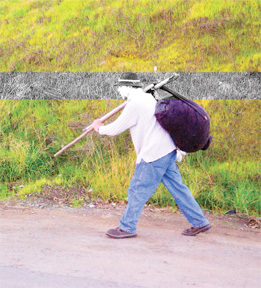 The New Rural Poor The New Rural Poor
Mention poverty and many people think of the inner cities. But a number of small Central Valley towns have poverty rates rivaling those found of the poorest neighborhoods of Los Angeles and Oakland.
And unlike poor, rural areas in other parts of the country that are losing population, many of these Central Valley communities—and their poverty rates—are growing fast as immigrants leave worse conditions in Mexico and come looking for farm work.
More and more, they are bringing their families with them and settling here rather than traveling back and forth, says Phil Martin, a professor of agricultural and resource economics and expert on rural migration. “Mexican rural poverty is being transferred to California and the U.S.,” Martin said.
In the raisin-growing region of Fresno County, the town of Parlier, for example, had about 11,000 people—97 percent of them Hispanic and 44 percent immigrant, in the 2000 census. The per capita income in 1999 was $7,100, and the unemployment rate was 27 percent. Yet Parlier has been growing 5 percent a year, with many new immigrants living in converted garages and backyard sheds.
Mayors, police chiefs, school administrators and other officials in some of these towns became so alarmed that they asked Martin and Ed Taylor, also a UC Davis agricultural and resource economics professor, to look into the influx of poor immigrants and when it might stop.
Collaborating with Michael Fix, a researcher at the Urban Institute in Washington, D.C., they looked at census data from 66 of California’s poorest rural towns and found similar growth in immigrants. Thirty-six percent of the towns’ people were immigrants in 2000, up from 30 percent in 1990. At the same time, the rate of farm employment declined from 28 percent to 24 percent. Altogether, 27 percent lived in poverty, more than double the state average.
In a book, The New Rural Poverty, just published by the Urban Institute, they describe a vicious cycle where California farm jobs attract poor immigrants. In turn, the bigger labor pool leads to the creation of seasonal farm jobs that do not generate above-poverty income levels.
Martin, Taylor and Fix found that the cycle has been accelerating and that the combination of immigration and seasonal farm jobs contributes to rising poverty rates in those towns.
Farmworkers earn on average between $8,000 and $9,000 a year, Martin said. Raising their wages by 40 percent would bring many above the federal poverty line, while increasing the retail price for fresh fruits and vegetables 2–3 percent, or about $9 more a year for the average consumer.
Some farmworker towns are looking to attract nonfarm industries to provide jobs and lower the poverty rate. If this effort fails, Martin worries about the future of Central Valley communities as more people arrive from the poorest regions of Mexico as well as from Central America.
Related stories:
Homelesss—Poorest of the Poor
The homeless, says sociologist Dean MacCannell, are a lot like the rest of us—with dreams of a decent job, good home and a nice vacation. The difference is that “their relationship to the world is broken, usually by a drug or alcohol problem.” [more]
Students Help
Tu Tran Huynh was deeply touched by the homeless children she met as a high-school volunteer at Sacramento’s Loaves and Fishes dining hall. She wanted to do more to help, so as a sophomore at UC Davis she co-founded a student organization to advocate for the local poor. [more]
The Poor Get Poorer
Since 2001, the U.S. economy has been growing and the standard of living going up, but more than 4 million more Americans have slipped into poverty. Three UC Davis economists recently took a closer look at the reasons why and found the answer lies largely in a growing wage gap. [more]
The Compassion Gap
Hurricane Katrina exposed more than the face of poverty in the United States, says sociologist Fred Block. It also revealed a historic schism in American attitudes—a “compassion gap” between traditions of helping and blaming the poor. [more]
Back to introduction, Poverty in the Land of Plenty,

Kathleen Holder is associate editor of UC Davis Magazine. Photos by Karin Higgins/UC Davis.
|

